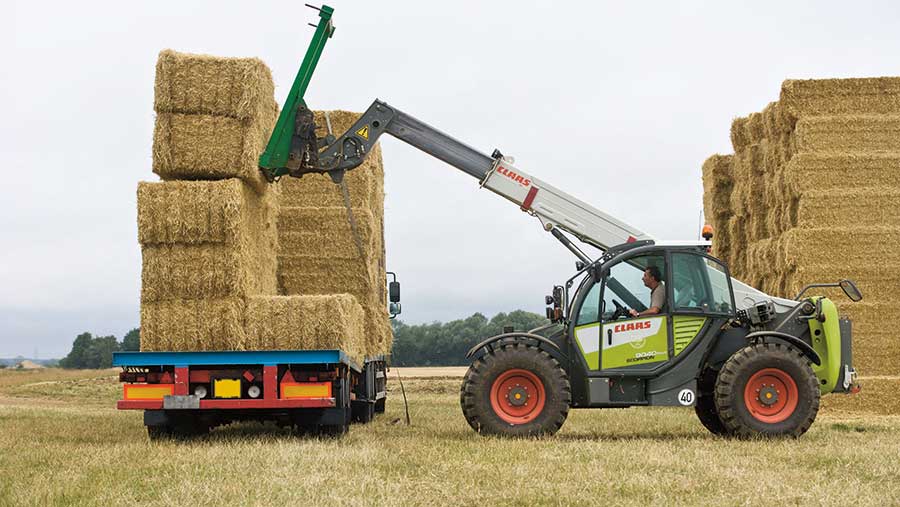Cereal growers to bale more straw as market tightens
 © Tim Scrivener
© Tim Scrivener Cereal growers are planning on baling more straw this harvest, rather than chopping it, as a means of recouping lost income and helping the livestock sector.
According to AHDB estimates, the UK wheat area is expected to be about 17% down this year, leading to potential straw shortages. Meanwhile, silage production is also reported to be down, thanks to the dry spring.
See also: Higher straw prices expected for harvest 2020
With cereal yields also expected to be well below their five-year average, growers are now considering baling straw rather than chopping, in a bid to make-up for potential income losses.
Herefordshire grower Robert Beaumont, who farms 100ha of arable at Sindons Mill Farm on the Herefordshire/Worcestershire border, is planning on baling all 50ha of his white straw to sell to local livestock farmers.
Usually, he would chop it all and incorporate it into soils to promote organic matter levels as part of his focus on regenerative agriculture.
But with his winter wheat yields expected to be down by nearly 3t/ha, from his 10t/ha average, baling and selling his straw will play an important role in recuperating lost income.
“The way the season has played out, we need to maximize our margins where we can, as we’re expecting poorer yields and still have rent to pay,” he told Farmers Weekly.
He explains that as he farms in a livestock dominated area, demand for straw is high and, consequently, many other arable farmers are also looking to bale their crops this year.
Selling straw can help out farmers
After being approached by two livestock farmers who were unable to get adequate straw supplies from their usual suppliers, Kent grower Guy Eckley, who farms 500ha of combinable crops at Saynden Farm, near Maidstone, decided to help by selling 80ha of his winter barley straw.
He admits that this isn’t something the farm usually does, as the inclusion of straw into the soil helps enhance fertility on his heavy weald clay land. He also raises concerns of the additional traffic bailing will bring to his controlled traffic system.
“Selling straw, however, does provide us with another output and, as the demand is there, it’s good that we can help out other farmers where we can,” he said.
Straw merchants have been expecting firmer prices in a number of upcoming standing straw auctions, with a 15-20% market increase predicted due to the changed supply and demand situation.

